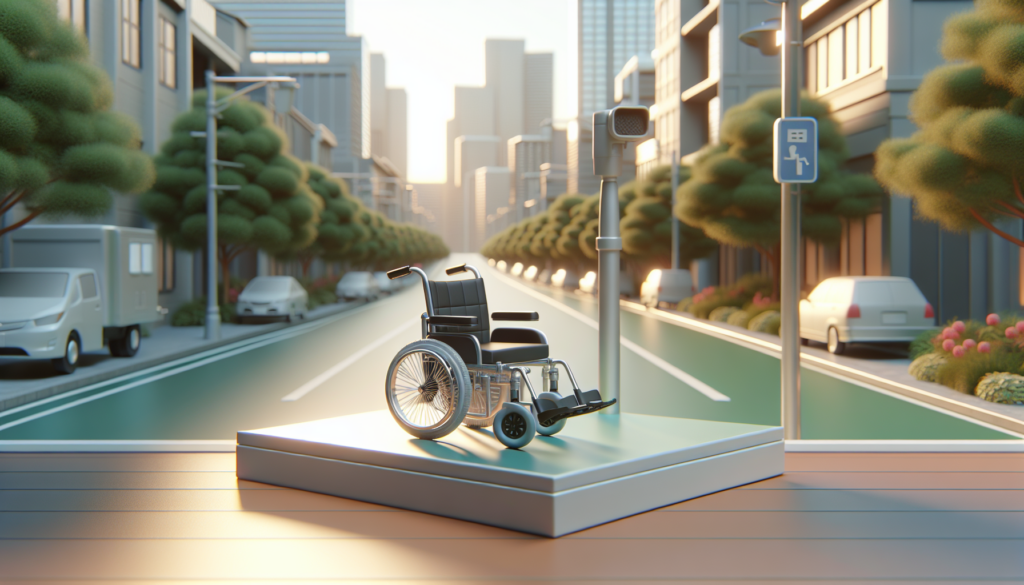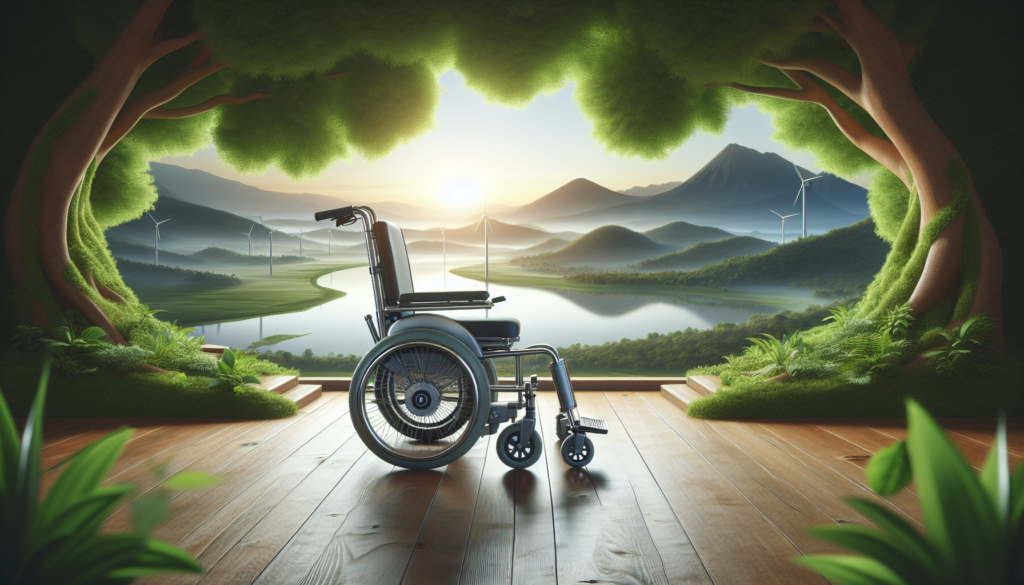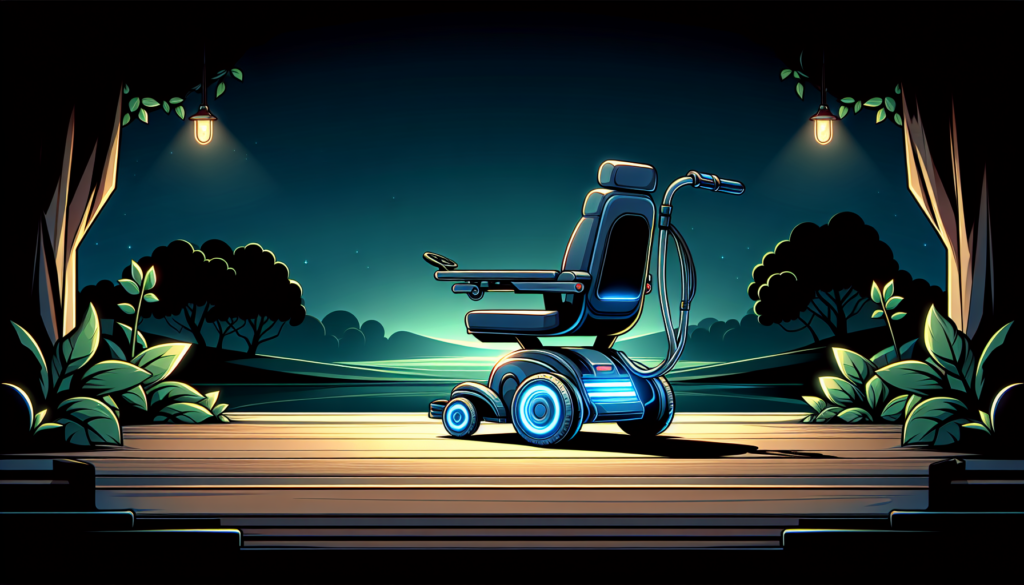
In recent years, electric wheelchairs have become increasingly popular, leading to a significant shift away from traditional manual wheelchairs. This evolution in mobility solutions is not just a trend but rather a fundamental change that enhances the lives of users by providing greater independence, comfort, and ease of use. As technology advances, electric wheelchairs are revolutionizing the way individuals with limited mobility navigate their daily environments, making them a preferred choice for many. Understanding why electric wheelchairs are replacing their manual counterparts is crucial for anyone interested in the future of mobility aids and the benefits they bring to users and caregivers alike.
Understanding Electric Wheelchairs: A Brief Overview
Electric wheelchairs, often referred to as power chairs, represent a significant advancement in mobility technology. Unlike traditional wheelchairs, which require manual effort for movement, electric wheelchairs are equipped with a battery-operated motor that allows users to navigate their environment with ease. This innovation not only enhances convenience but also provides individuals with limited mobility the ability to travel longer distances without fatigue. With features like adjustable seating, control handles, and the ability to maneuver in tight spaces, e-wheelchairs have become the go-to choice for many seeking independent living solutions.
Additionally, electric wheelchairs often include customizable options to accommodate the specific needs of users. These adaptations can range from different seat configurations to specialized control systems for those with limited hand dexterity, enhancing user comfort and safety. As technology continues to evolve, manufacturers are incorporating advanced features such as smart controls and improved battery life, making e-wheelchairs even more user-friendly and efficient. Consequently, the shift towards e-wheelchairs is not just a trend; it’s a transformative change that empowers individuals to reclaim their independence and navigate their environments with confidence.
Key Advantages of Electric Wheelchairs Over Manual Wheelchairs
Electric wheelchairs offer a number of key advantages that are leading many to choose them over traditional manual wheelchairs. One of the most significant benefits is the ease of use; with an electric wheelchair, users can navigate various terrains, including inclines and uneven surfaces, with minimal effort. This independence is particularly valuable for individuals with limited upper body strength or endurance, allowing them to maintain their mobility and engage in daily activities without the assistance of others. Additionally, e-wheelchairs come equipped with advanced features like adjustable seating, tilt, and recline functions, providing users with enhanced comfort and the ability to customize their seating position to suit their specific needs.
Another important advantage of e-wheelchairs is their enhanced safety features. Many models are designed with anti-tippers, ensuring greater stability on slopes, and some include advanced braking systems that offer users confidence while navigating their environment. Furthermore, the ease of control with joystick operation makes maneuvering effortless, even in tight spaces. This technological advancement is especially beneficial for those who may struggle with the physical demands of manual wheelchair propulsion. As e-wheelchairs continue to evolve, their popularity is likely to grow, promising a future where mobility is more accessible and user-friendly than ever before.
Technological Innovations Driving Electric Wheelchair Development
The evolution of electric wheelchairs has been significantly propelled by advancements in technology, offering unparalleled benefits compared to traditional manual wheelchairs. With the integration of lightweight materials and sophisticated battery technologies, modern electric wheelchairs provide enhanced mobility and accessibility. Innovations like smart sensors and automated control systems allow users to navigate more effortlessly in various terrains, making them suitable not only for indoor use but also for outdoor adventures. Additionally, the development of faster charging capabilities and extended battery life means that users can rely on their e-wheelchairs for longer periods, eliminating the stress of frequent recharging while on the go.
Moreover, the advent of IoT (Internet of Things) has enabled manufacturers to incorporate features that enhance the user experience even further. For instance, e-wheelchairs can now offer customizable seating options, adjustable speed settings, and integration with mobile applications for easier control. These technological innovations not only contribute to user comfort and satisfaction but also empower individuals with disabilities by fostering a sense of independence. As the market continues to innovate, the electric wheelchair emerges as a future-ready solution, poised to redefine the landscape of mobility aids and making daily life more manageable for those who rely on them.
User Experience: Real Stories from Electric Wheelchair Users
The user experience of electric wheelchair users often highlights the enhanced independence and freedom they gain compared to traditional wheelchairs. Many individuals who have transitioned to electric wheelchairs report significant improvements in their daily lives. For instance, users share stories of successfully navigating various terrains, from smooth sidewalks to rough trails, which was previously challenging or impossible with manual wheelchairs. The ease of operation with joystick control allows them to traverse crowded spaces and join social gatherings with minimal assistance, fostering a sense of community and belonging that might have been hindered before. This newfound mobility dramatically boosts their confidence and enables them to pursue activities and hobbies they love, drastically improving their quality of life.
Moreover, electric wheelchairs come equipped with features that cater specifically to the needs of users. For example, adjustable seating and reclining capabilities provide superior comfort, allowing for longer use without fatigue. One user recounted how their electric wheelchair‘s ability to raise and lower its height helped them interact better with friends and family, making everyday interactions more enjoyable. Such advantages are further complemented by advancements in technology, like smartphone integration, which permits users to control various functions right from their devices. In sharing these real stories, it becomes evident that electric wheelchairs are not just a device for mobility but an essential empowering tool that reshapes lives for the better.
Environmental Impacts: The Sustainability of Electric Wheelchairs

The environmental impacts of traditional manual wheelchairs versus electric wheelchairs are increasingly coming under scrutiny as society moves toward more sustainable solutions. While manual wheelchairs require human power for mobility, electric wheelchairs utilize batteries and electrical components, which may initially suggest a heavier environmental footprint. However, many modern electric wheelchair manufacturers are prioritizing sustainability by using recyclable materials and optimizing energy consumption. This shift not only reduces waste but also maximizes the efficiency of energy use over the lifespan of the wheelchair, promoting a greener choice for mobility solutions.
Moreover, the transition to electric wheelchairs can significantly lessen the overall carbon footprint associated with personal transportation. As advancements in battery technology lead to longer-lasting charges and reduced reliance on fossil fuels, electric wheelchairs are becoming a more eco-friendly option compared to vehicles that might otherwise be used for mobility assistance. Embracing electric wheelchairs not only enhances the mobility and independence of users but also contributes positively to environmental sustainability, making it a compelling case for their increasing adoption in place of traditional wheelchairs.
Future Trends: What to Expect in Electric Wheelchair Technology

As technology advances, the electric wheelchair continues to evolve, bringing forth enhancements that promise to revolutionize mobility for users. Future trends suggest that electric wheelchairs will become increasingly versatile, with innovations such as smart sensors and artificial intelligence (AI) integration. These features will enable users to navigate various terrains effortlessly and enhance safety with obstacle detection. Additionally, advancements in battery technology will likely lead to longer-lasting power sources, allowing for extended travel distances without needing frequent recharging. The rising emphasis on personalization will also cater to the unique needs and preferences of users, offering customized controls and adaptable seating options that align with individual lifestyles.
Beyond functionality, aesthetics will play a significant role in electric wheelchair development. Manufacturers are expected to focus on sleek, modern designs that do not compromise the user’s sense of style. Lightweight materials will not only improve portability but also contribute to a more attractive and less cumbersome appearance. Moreover, we can anticipate a surge in connectivity features, enabling electric wheelchairs to interact with smart home devices and healthcare systems. All these trends indicate that the future of electric wheelchairs is not just about mobility; it embodies a complete lifestyle enhancement for users, catering to their desires for independence and streamlined living.
Comparative Analysis: Electric vs. Manual Wheelchairs in Different Scenarios
Electric wheelchairs have rapidly gained popularity over manual wheelchairs due to their unique advantages in various scenarios. For individuals with limited upper body strength or mobility issues, electric wheelchairs provide an effortless means of transportation. Users can navigate effortlessly, allowing them to cover longer distances compared to manual models that require physical exertion. In situations where users may need to traverse uneven terrain or travel over long distances, an electric wheelchair offers enhanced performance, making it a more practical choice. The ease of driving these powered options also empowers users by promoting independence and reducing the need for assistance from caregivers or family members, ultimately improving their quality of life.
Furthermore, in social settings and public spaces, electric wheelchairs have proven to be more advantageous. They often come equipped with features like adjustable seating and tilt mechanisms, allowing for greater comfort during extended use. Individuals using electric wheelchairs can easily maneuver through crowds, making them ideal for shopping malls, parks, or events. The added technology in electric wheelchairs, such as joystick controls and the ability to adapt to various speeds, offers a more personalized experience. This advancement highlights a significant shift in the perception and usability of mobility aids, reinforcing the role of electric wheelchairs as a transformative solution to meet diverse mobility needs.
Embracing the Future of Mobility

In conclusion, the rise of electric wheelchairs is transforming the way we perceive mobility aids. The enhanced independence, versatility, and efficiency they offer make them an attractive option for individuals with mobility challenges. As technology continues to advance, electric wheelchairs are not only becoming more accessible but are also incorporating features that cater to the diverse needs of users, ensuring they can navigate their environments with ease and confidence.
Moreover, the positive impact on the quality of life for users cannot be understated. By providing greater freedom and accessibility with us at EKO Life MY, electric wheelchairs are enabling individuals to participate more fully in their communities and lead more active lifestyles. As we look to the future, the transition from traditional to electric mobility solutions marks a significant step towards inclusivity and empowerment for all individuals facing mobility challenges.

I’m confused, there’s no summary for me to comment on.
Dear Alfie, thank you for reaching out to us. It seems we missed adding a summary for this blog post. If you’d like to discuss a particular topic, feel free to start a conversation and we’ll be happy to create a summary for you. Alternatively, you can email us at [email protected] or call us at +60 3-7890 3042. We appreciate your feedback and we’re here to help.
I don’t understand what’s going on here, seriously start creating content.
Dear Eunice Sim, sorry to hear that you’re feeling a bit confused about our blog. We’re still in the early stages of creating content but we’re committed to providing valuable information to our users. Would you like to reach out to our team directly to discuss further? Our contact details are [email protected] (email) and +60 3-7890 3042 (phone). We’re here to help and want to ensure you get the most out of our blog.
I was expecting an interesting article to read but this is just blank. Can you please fill it in?
Hello Ivy Lim, we apologize for any inconvenience caused by the blank article. Our team will look into this matter immediately. If you could please contact us via email at [email protected] or call us at +60 3-7890 3042, we’ll be happy to assist you and provide a suitable solution.